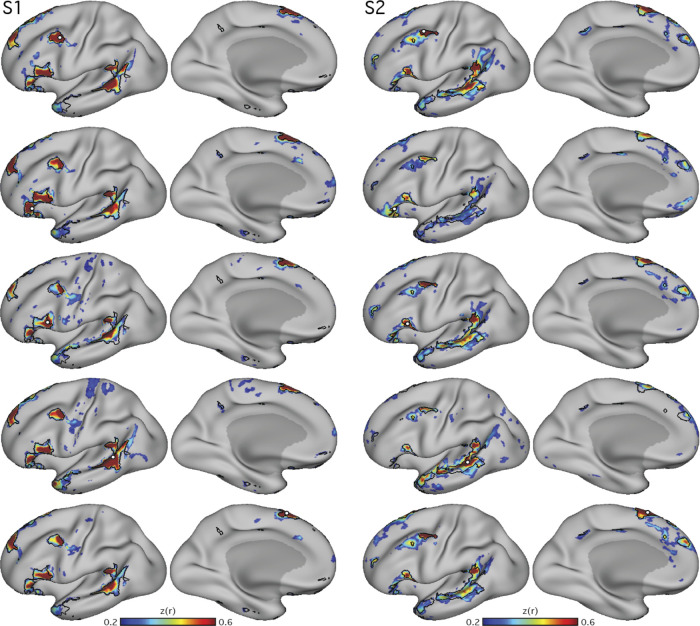Fig. 2.
Distributed organization of the candidate language network is confirmed using seed regions in multiple cortical locations. In 2 subjects (S1 and S2), seed regions (○) were selected from different portions of the network identified in Fig. 1. In each panel, the candidate language network defined by data-driven parcellation (see Fig. 4) is shown in black outline to provide landmarks for comparing across panels. In each subject, seed regions were placed in the inferior frontal gyrus at an anterior (2nd row from top) and posterior site (3rd row from top) as well as in the posterior superior temporal sulcus (4th row from top) and posterior superior frontal gyrus (bottom row). Although the maps differ in their details, the large-scale distribution and location of the network regions are appreciably similar across seed regions, with regions of high correlation falling generally within the parcellation-defined boundaries. z(r), Fisher’s r-to-z transformed Pearson’s product-moment correlations.

